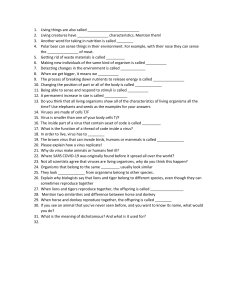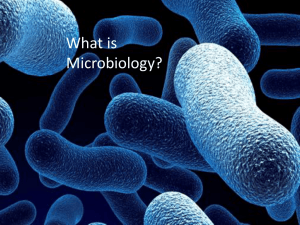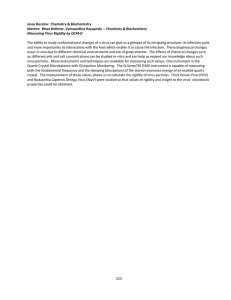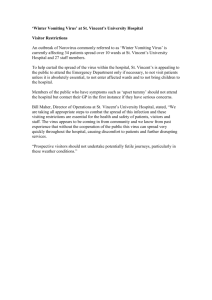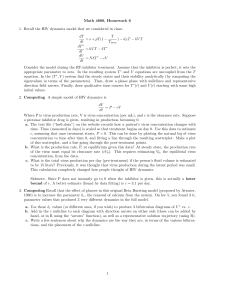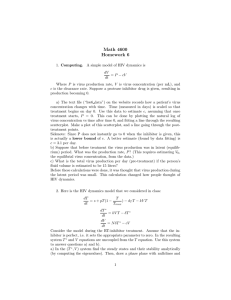Microbes and Disease Study Guide
advertisement
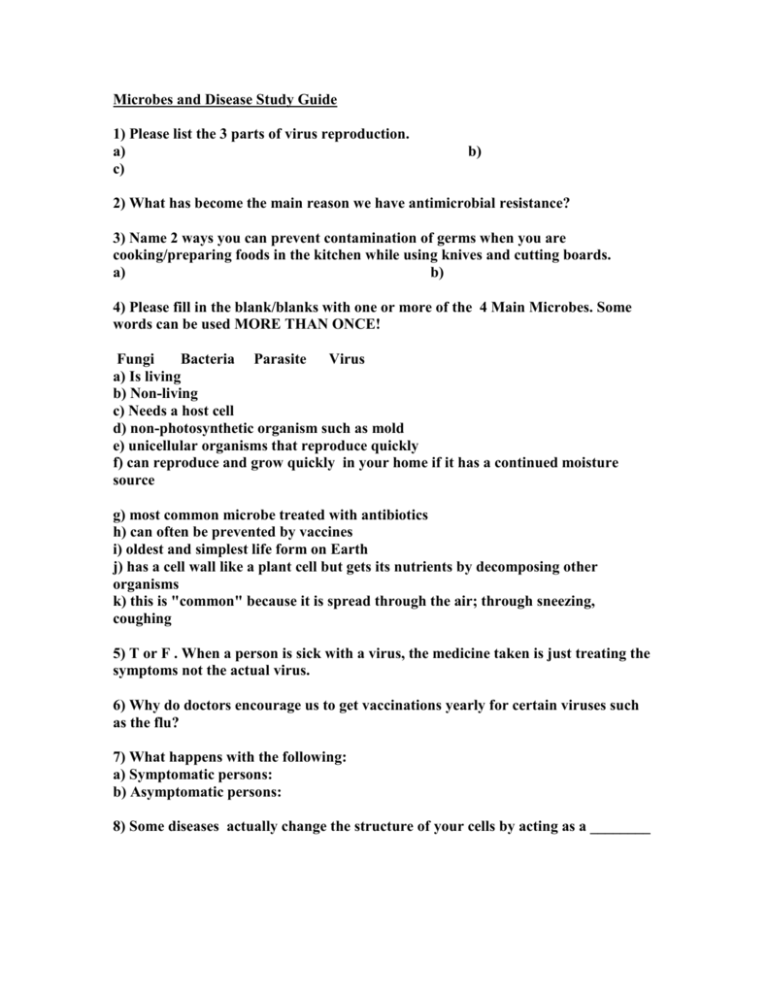
Microbes and Disease Study Guide 1) Please list the 3 parts of virus reproduction. a) c) b) 2) What has become the main reason we have antimicrobial resistance? 3) Name 2 ways you can prevent contamination of germs when you are cooking/preparing foods in the kitchen while using knives and cutting boards. a) b) 4) Please fill in the blank/blanks with one or more of the 4 Main Microbes. Some words can be used MORE THAN ONCE! Fungi Bacteria Parasite Virus a) Is living b) Non-living c) Needs a host cell d) non-photosynthetic organism such as mold e) unicellular organisms that reproduce quickly f) can reproduce and grow quickly in your home if it has a continued moisture source g) most common microbe treated with antibiotics h) can often be prevented by vaccines i) oldest and simplest life form on Earth j) has a cell wall like a plant cell but gets its nutrients by decomposing other organisms k) this is "common" because it is spread through the air; through sneezing, coughing 5) T or F . When a person is sick with a virus, the medicine taken is just treating the symptoms not the actual virus. 6) Why do doctors encourage us to get vaccinations yearly for certain viruses such as the flu? 7) What happens with the following: a) Symptomatic persons: b) Asymptomatic persons: 8) Some diseases actually change the structure of your cells by acting as a ________ 9) What is a VECTOR? b) Please give 3 examples of vectors and what disease they can give you 1) 2) 3) 10) What have been the 2 main reasons we as a society have been able to lower the amount of illnesses and deaths? 1) 2) 11) What is the purpose of vaccination programs creating a "herd immunity"? 12) Please DESCRIBE 3 FACTORS that would make a country more VUNERABLE (more likely) to experience an epidemic and EXPLAIN HOW these factors increase the liklihood that the whole country will be affected! 1) 2) 3) 13) Complete the ppt: Disease Agent Test Review attached on my Interactive Notebook p 33 ___________ & ___________ are used to describe widespread outbreaks of a disease, but there are subtle differences between the two words. An _______________ occurs when an infectious disease spreads rapidly to many people. In 2003, the severe acute respiratory syndrome (SARS) epidemic took the lives of nearly 800 people worldwide. A ______________ is a global disease outbreak. HIV/AIDS is an example of one of the most destructive global pandemics in history. Influenza pandemics have occurred more than once. *________________ _________________ killed 40-50 million people in 1918. *________________ __________________ killed 2 million people in 1957. *_____________ ____________ ________________ killed 1 million people in 1968.
